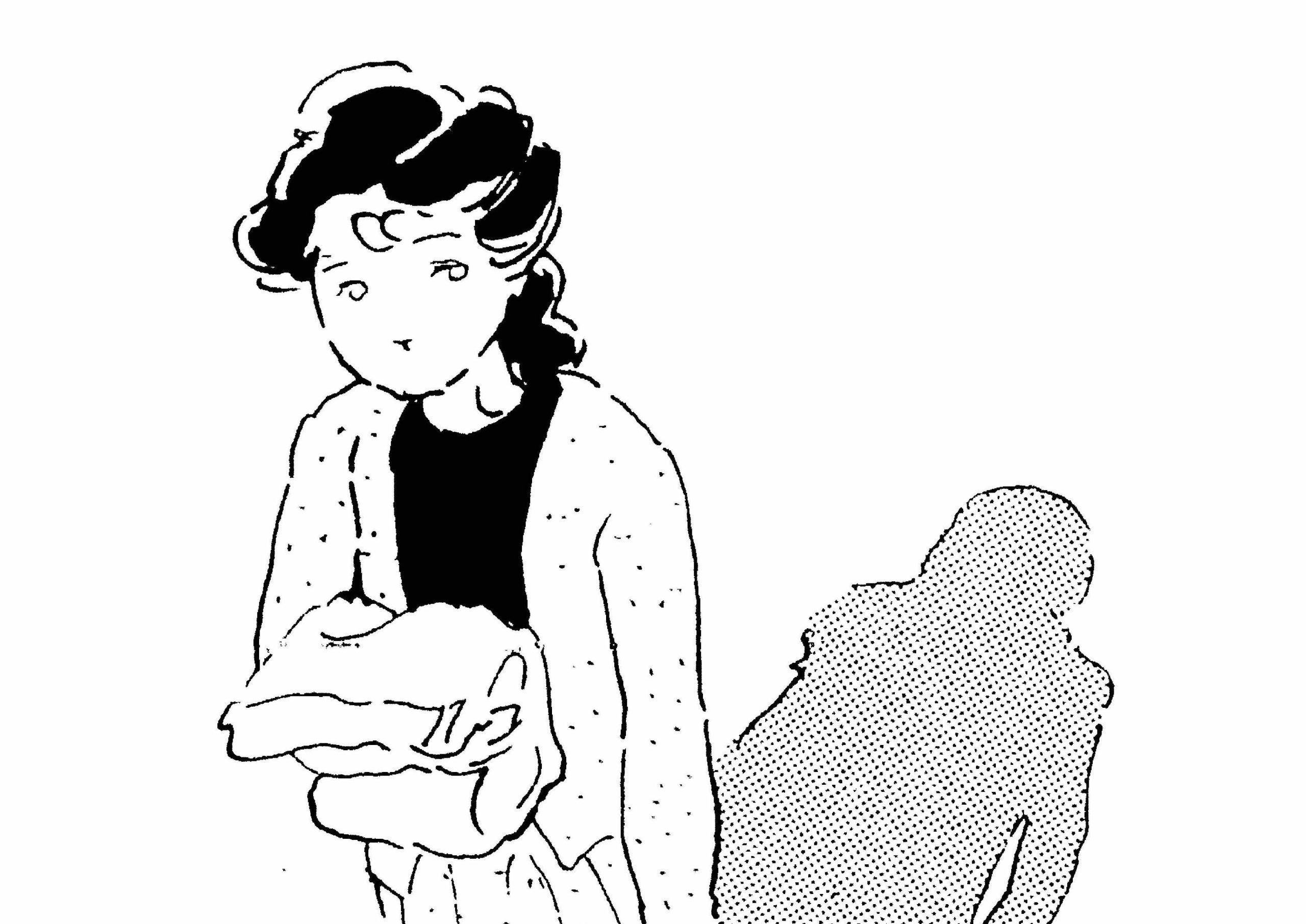Books & Culture
Late to the Party: Kōbō Abe’s ‘The Woman in the Dunes’
Late to the Party: Kōbō Abe’s ‘The Woman In the Dunes’ Reading the Japanese answer to Franz Kafka for the first time

In Late to the Party, we ask writers to read a seminal author who has somehow passed them by. You can read previous entries here.

There was one thing I knew about The Woman in the Dunes that assured me I would connect with it on at least some level: I am all too familiar with the horrors of sand.
For a white guy, I’ve delved pretty deeply into Japanese literature, from Yukio Mishima to Yasunari Kawabata to Ryūnosuke Akutagawa’s Rashōmon and Other Stories (from which Akira Kurosawa adapted his classic film). I appreciate the spareness in diction, preciseness, meditative melancholy, and attention to the irreparable gulf of perception and misperception between each person and the next. I’ve found all these qualities in contemporary Japanese novels—at least, the contemporary Japanese novels I could find. Only three percent of the American book market represents titles in translation, and only a fraction of those books are translated from the Japanese.
But despite the slim pickings in a literary category I’ve come to love, I’d never gotten around to The Woman in the Dunes, the best-known novel by celebrated mid-century surrealist Kōbō Abe. Maybe it was his reputation for abashedly eerie weirdness; as a reader, I tend not to actively seek out the experimental or the nightmarish. When I mentioned to some friends what I was reading, those who were familiar with the book vacillated between displays of excitement and wide-eyed alarm. “Dude,” one said, “it’s compelling, but it’s dark, and strange.” Another: “He’s the Japanese Kafka—fair warning.” They knew that I find the Kafkas of the world intriguing, but not entirely to my taste.
That said, it was beyond time. And besides, there was the sand.

For seven summers in the prime of my youth, I worked at a beach club on Long Island as a cabana boy. Not the sexualized Matt Dillon in The Flamingo Kid kind of cabana boy, but the “sure, I can drag four 20-pound lounge chairs, two umbrellas, and a cooler filled with beer a mile and a half down to the ocean for you, Marilyn” kind of cabana boy. The kind that trudged miles across scorching white sand beaches in swampy heat day after day for four months, putting up beach parasols that always blew over, dragging beach furniture in little rickshaws with tires that were always flat, taking out the garbage for families with screaming children that never seemed to want to go home.
Later summers were better. I knew the families I worked for pretty well, and they would feed me dinner, slip me beer, and chat with me for hours at a time. But those early summers, before I had my own row of cabanas and simply relieved other cabana boys and girls on their courts four days a week, were rough.
The first workdays of the week, Maintenance Mondays, were the most Sisyphean of all. Most days, we’d sit on the porch on the front office and listen to the crusty growl of our sexist, racist, xenophobic club manager until someone complained that there was too much sand on the boardwalk. Pushbrooms in hand, we’d trudge across the club to spend an hour brushing said sand off a mile of hot tar-coated planks before trudging back and spending the rest of the day forced to pay attention to the manager while he did things like point at a news clipping of Stephen Hawking and say, “Not worried about black holes? What’s this ugly son-of-a-bitch got to live for, anyway?” until someone inevitably complained about more sand on another boardwalk—sometimes it was even the same sand on the same boardwalk—and we trudged back across the club to take care of it. Usually, these efforts were accompanied by club members saying things like “Boy, doesn’t get better than a job at the beach, does it? Beats the office!”

The worst of those days was after an early summer storm. That morning, there was a particular evil to the club manager’s slight smile, his aviator sunglasses barely hiding his glee. Shortly after arriving, I was down on the beach with six other kids with yard tools that looked like some unholy union between a garden rake and a deep sea dredge, raking up rotting, stinking seaweed and dumping it into huge black garbage bags. Occasionally someone would drive by on an ATV, look at us with a mixture of humor and pity, refuse to drive us and the bags the two miles to the dumpsters, then drive off. Then, when we each had a full bag, we’d haul them down the boardwalk toward the dump. Through an endangered bird nesting area. During mating season. Before nets had been strung up to keep the terns from dive-bombing pedestrians.
For more than half of that two-mile walk, the only thing worse than the smell of sixty pounds of seaweed rotting in each bag was trying to keep the birds from pecking at our eyes while we dodged the torrent of birdshit. Once we finally dropped the bags off at the dump, we walked back past the front office, where the club manager literally pointed and laughed at our sorry shit-and-seaweed-covered forms as we tried in vain to delay the inevitable return to the shoreline.
“What the fuck you waiting for?” At least I think that was it—we could barely make out what he was trying to spit out in that thick Queens accent of his between the bouts of belly laughter. “There’s lots more seaweed where that shit came from. Get back to it.”

Here’s what I learned from The Woman in the Dunes: There are definitely worse sand-related jobs than being a cabana boy. Also, Abe is really something else. Spare he may be, but Kawabata, Akutagawa, and Mishima he ain’t. Haruki Murakami might be the one with a novel called Kafka on the Shore, but with The Woman in the Dunes, Abe beat him to everything but the title.
In an article for Vice in 2013, in which Blake Butler read not only Woman in the Dunes but three other Abe novels in succession, he summarizes the whole book like so:
Abe’s most well-known novel, and for good reason. It gets very close to a feeling that I suspect many of us have had — that life is often fucked, and we are all trapped in an endless cycle of shit. Ostensibly it’s about an insect collector sent on a work trip into the desert, who then becomes stranded in a city that is stuck inside a pit of quicksand. There he meets a woman who seems determined to make him stay in the pit and be her husband. There are few who could make such an absurd scenario seem so plausible and familiar, like squeezing humanity from a bear trap, but Abe pulls it off. Emotions are close and logically considered, fleshed in the reader in a way that makes them almost trapped in the body of the protagonist too — a labyrinth with no real gap for exit. The first of many great examples of Abe’s amazing ability to take a bizarre, implausible situation — one that shouldn’t be able to sustain a novel-length text — and somehow make it seem as familiar as anything more largely considered “real.”
I started reading the novel a few weeks after Twin Peaks: The Return started its 18-episode run. Abe was train reading in the morning and afternoon, and the evenings saw me playing David Lynch binge catch-up. That was… a mistake. I hadn’t slept so poorly since the summer after I graduated college.
Haruki Murakami might be the one with a novel called ‘Kafka on the Shore,’ but Abe beat him to everything but the title.
The Woman in the Dunes and both iterations of Twin Peaks share much in terms of where their respective authorial eyes are focused. Like Lynch, Abe sees the ore of horror buried within the quotidian, just waiting to be mined. The infamous sand that makes up the titular dunes of the novel seems, at first, to be just that: crushed rock. (Once, a member of the beach club I worked at for seven summers asked me to plant a tree in front of her cabana. When I told her that trees needed nutrient-rich soil in which to grow and could not grow in sand, which is crushed rock, she responded with a whinge: “But it’s a beech tree!”) The novel goes to great pains to explain the science behind sand, as if to elucidate its nature as a real, understandable thing:
SAND: an aggregate of rock fragments. Sometimes including loadstone, tinstone, and more rarely gold dust. Diameter: 2 to 1/16 minutes.
A very clear definition indeed. In short, then, sand came from fragmented rock and was intermediate between clay and pebbles. But simply calling it an intermediate substance did not provide a really satisfactory explanation. Why was it that isolated deserts and sandy terrain came into existence through the sifting out of only the sane from soil in which clay, sand, and stones were thoroughly mixed together? If a true intermediate substance were involved, the erosive action of wind and water would necessarily produce any number of intermingling intermediate forms in the range between rock and clay.
That explanation proved as solid a foundation for the logic of the properties of the sand in the novel as underpinnings made of sand themselves. The sand of the seaside town where the book’s protagonist, a schoolteacher and amateur entomologist named Niki Jumpei but referred to almost always simply as “the man,” is eventually trapped is anything but what we think of as sand. It is as much a character in the novel as the landscape of a Sergio Leone film, determining the lives of those who live within it the way the smog-filled cities of China have forced its citizens into wearing air pollution masks.
The sand is not a fixed quantity, but increases and increases, constantly encroaching on the village and threatening its very existence. The sand goes on to prove to have corrosive qualities, as well—it dissolves wood, and, left long enough, rots flesh. It entirely determines the lifestyle of the town in which the man is trapped, as well as determining the necessity of trapping men like him to the survival of the townspeople.
Like David Lynch, Abe sees the ore of horror buried within the quotidian, just waiting to be mined.
But it’s important to the novel that the narrator thinks of the sand logically, because the absurdity of his situation demands an attempt to retain a grasp on those things in his world that are solid and understood. If this sounds existentialist in a Myth of Sisyphus sort of way, that’s probably because it is.
Part of the novel’s ability to feel real is rooted in Abe’s choice to use free-indirect speech to tell his story. When under pressure, the man thinks in fragments of thought that spiral into new fragments—some of which, during moments of clarity, feel precise and measured, while others, detailed as his thought process descends into paranoia and despair, are simply odd wanderings of the troubled mind. It’s not purely stream-of-consciousness, but let’s just say it’s likely Abe learned as much from Mrs. Dalloway as he did from “The Country Doctor.” The style allows readers (or at least this reader) to see replicated on the page some of their own natural patterns of thought.
Another reason the novel feels real? The man is a real shit to the eponymous woman. Of course he is! Why, when stuck in a horrible situation with someone who is fairly evidently a victim of kidnapping-related trauma and potentially also Stockholm syndrome, would you attempt to empathize before holding your fellow prisoner responsible for your predicament, abusing her verbally and eventually physically and—once you’ve mostly accepted the hopelessness of trying to escape and found a way to make something of a mutually-beneficial relationship with her—sexually?
Another reason the novel feels real? The man is a real shit to the eponymous woman.
While painful to read, this felt as spot-on to me as any of the book’s other takeaways on human nature. Is this not exactly what a semi-intellectual man afraid of powerlessness and the dissolution of what he knows would do in a situation in which he must face precisely those fears? Wouldn’t he subjugate and abuse a woman he barely knows in order to feel some semblance of control? The woman remains, for the bulk of the novel, a cipher; the man simply cannot understand how her own troubles motivate her, or why they might be more important to her than his. Masculinity was as frail and toxic in ‘60s Japan as it is anywhere else in the world today.

Universal, too, is the willingness of humankind to exploit and subjugate its own in the name of “getting by.” The townspeople, it turns out, sell the sand on the black market to construction companies, which use it to make cement. The substance that keeps them trapped in lives of toil and prompts them to kidnap strangers and enslave them in order to fight off that substance itself turns out to be their source of livelihood—the base ingredient of a mundane construction tool tied to a bureaucratic criminal conspiracy. If that doesn’t scream Lynchian, I don’t know what does.
In the end, what would happen in Kafka also happens here. After many escape attempts, each resulting in a worse fate than the last, the man’s spirit is broken. Left still in the little town by the shore, living with the woman in her little house in the dunes, he remains convinced he can leave whenever he wants but feeling “no particular need to hurry about escaping.” The result is, in a way, Nietzschean—gaze long enough into the sand and there you are, a sandpit yourself. Or, as Abe put it:
You can’t really judge a mosaic if you don’t look at it from a distance. If you really get close to it you get lost in detail. You get away from one detail only to get caught in another. Perhaps what he had been seeing up until now was not the sand but grains of sand.
Perspectives change when you’ve been ground down enough that you can’t even remember how you felt before the grinding started. And for the man, that means remaining a missing person, stuck for life in a hut in a seaside town shoveling sand away, never able to see the water.
I can relate. I didn’t get to swim in the ocean much as a cabana boy.










